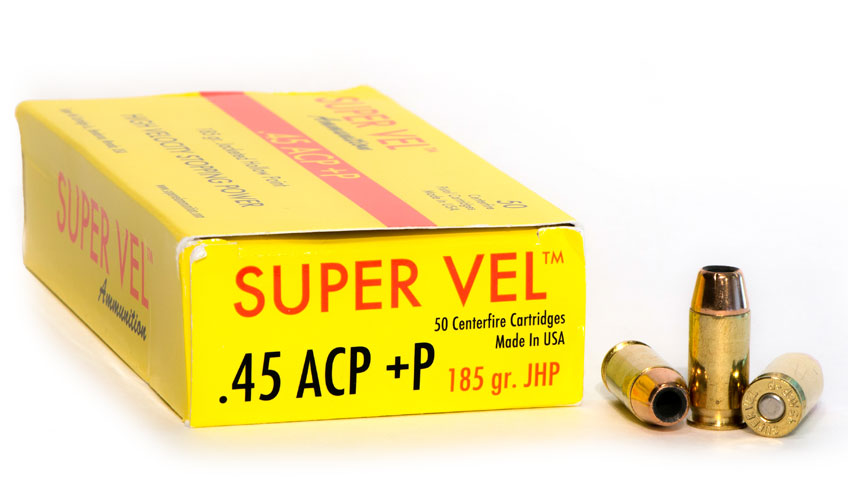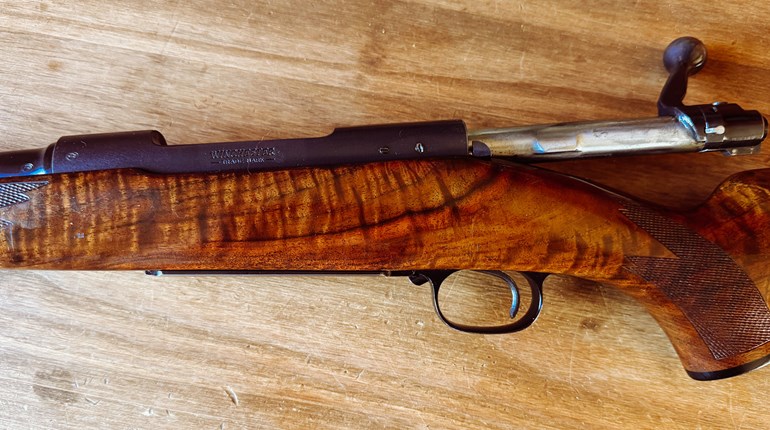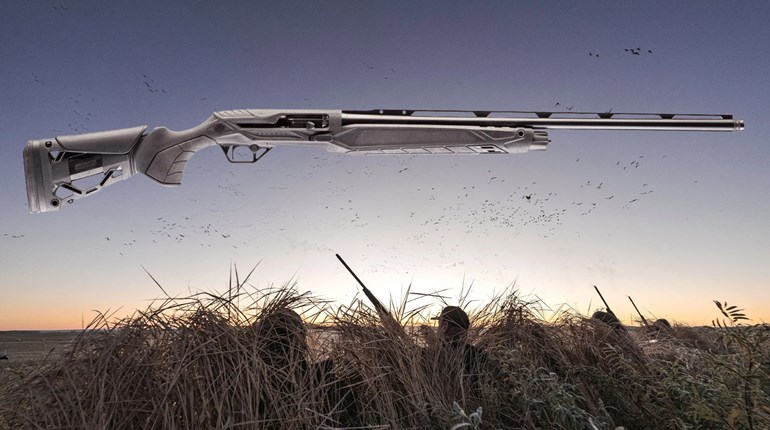
In the mid-1960s most policemen carried revolvers loaded with .38 Spl. ammunition. The standard was a 158-grain, lead-round-nose (LRN) bullet with a muzzle velocity of about 850 fps. Ballistics like these could maybe best be described as lumberingly ineffective. A man named Lee Jurras changed all that and might be credited with starting the high-velocity +P craze with the Super Vel Cartridge Company.
Jurras was an avid shooter who left his mark in the world of handguns. He started and funded the American Handgunner Awards Foundation. Working with MAJ George Nonte, he wrote a book on handgun hunting. He developed the powerful line of Howdah wildcat handgun cartridges. In addition, he aided with the development of the .41 Auto Mag cartridge. But, Jurras would gain his real fame with his own ammunition company.
Working with some ballistic assistance from handgun pioneer J.D. Jones—known as the father of the .300 Whisper/.300 BLK—Jurras established the Super Vel Cartridge Company. In 1967 when the Los Angeles County Sheriff’s Department and the Phoenix Police Department adopted Super Vel as their duty ammunition, the Super Vel legend was born.

The appeal of Super Vel was its high velocity. Jurras’ approach was to use a lightweight 110-grain bullet in the .357 Mag. This allowed him to safely push it beyond 1,400 fps. The result was almost 500 ft.-lbs. of kinetic energy; the antithesis of “lumbering ineffectiveness.” All this power allowed the bullets to expand wider and damage more tissue, and Jurras applied this concept to other cartridges. The way in which cops clamored to get Super Vel you’d have thought Jurras was offering a lifetime supply of jumbo-size donuts with each box purchased.
But it was not all rainbows and lollipops. Domestic ammunition manufacturers refused to sell brass to Super Vel. This necessitated the purchase of more expensive brass from Europe. Unable to secure brass, and unable to meet a tax debt, Super Vel assets were seized by the IRS and in January of 1975 they were auctioned off.
In 2015, Cameron Hopkins, a former Editor-In-Chief of American Handgunner was operating a small commercial-ammunition reloading company in Las Vegas. He realized the popularity of Super Vel ammo and how enamoring it once was. Hopkins thought the time right for a Super Vel return. Working through their mutual friend J.D. Jones, Hopkins acquired the rights to the Super Vel brand from Jurras. His goal was to duplicate or exceed original Super Vel performance. By working with modern flash-retardant powders unavailable in the early ‘70s, and by collaborating with a SAAMI-certified laboratory, Super Vel is again a high-velocity, high-end, ammunition reality.
I stumbled on this story while researching a book on Scout Rifles. My research led me to Hopkins and when he told me he had revived the Super Vel line, I requested he send some production off-the-shelf samples. The three loads provided all utilize Super Vel head-stamped brass and either Sierra or Cor-Bon JHP bullets. I tested the two 9 mm loads in a Wilson Combat 1911 with a 5-inch barrel and the .45 ACP load in a Nighthawk Custom 1911 with a 4.25-inch barrel.
Accuracy was splendid and velocities were in line with what the company advertises. By the way, Super Vel does not advertise pressure-barrel velocities; it lists a number of handguns and the actual velocities obtained with them. It should also be mentioned that velocities between identical handguns can vary by a small amount so do not expect the same numbers from your handguns.

For reliability testing I fired 100 rounds of each load. There were no issues with either of the 9 mm loads but, in the beginning I did encounter a few failures to feed with the top three rounds in fully loaded with the .45 ACP. magazines. This was corrected when I switched magazine brands. Many reliability problems with semi-automatic handguns can be traced to one—or more—problems with a pistol’s magazine.
From a terminal-performance standpoint, the 185-grain .45 ACP and 115-grain 9 mm loads met or even exceeded my better-than-average standard of more than 13 inches of penetration while still expanding to at least 0.58 inch. The 90-grain 9 mm load did not meet that threshold, but did create a massive wound cavity. However, the real appeal of this lightweight load is shootability. It should be a great load for subcompact 9 mm pistols rated for +P ammunition. Additionally, Super Vel lists velocities out of compact barrels at around 1,250 fps. Launched at speeds like that I’d speculate the bullet to drive a bit deeper as a result of less deformation.
I consider this all as good news and Super Vel has more to come. The company will soon release a subsonic 9 mm load and is completing testing of a “Super Snub” load that might change they way you look at the effectiveness of the snub-nose .38 Spl. Hopkins says it will push a 90-grain Sierra JHP bullet in excess of 1,300 fps from short-barreled revolvers.
Super Vel ammunition is not cheap but high performance always comes with a price. You can order 50-round boxes direct from the company's website and it provides a flat-rate shipping charge of $4.99 no matter how many boxes you buy. (I’d suggest you order one of the company’s “We’re glad to see you’re back!!” Pin Up Girl T-shirts, too. You might like it just as much as the ammunition.)





































